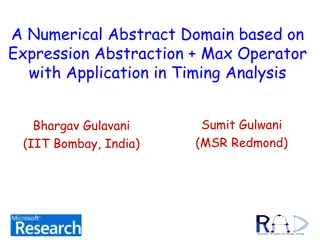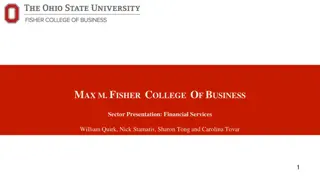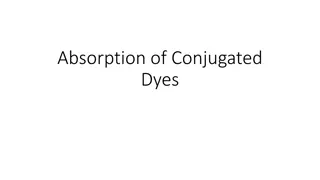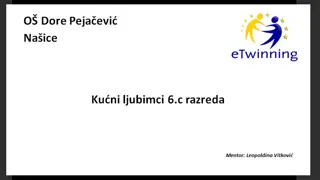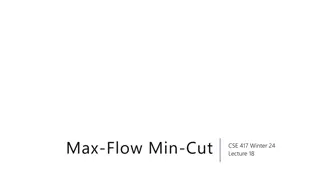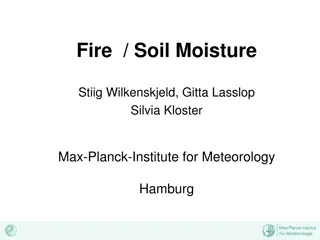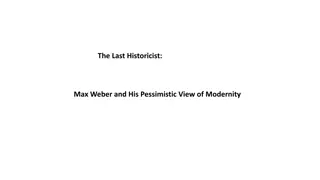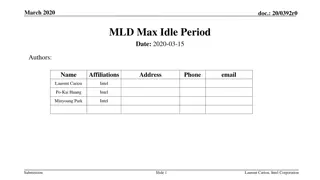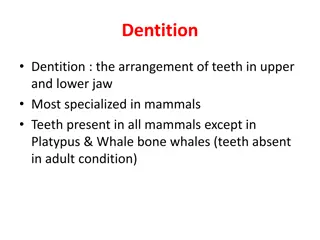
Understanding Premolars in Dentistry
Explore the anatomy, development, and function of premolars in dentistry. Learn about the similarities to anterior teeth, chronology of premolar eruption, and the roles of first and second premolars. Discover the surfaces of the maxillary first premolar and their functions. Dive into the world of dental education with this informative content.
Download Presentation

Please find below an Image/Link to download the presentation.
The content on the website is provided AS IS for your information and personal use only. It may not be sold, licensed, or shared on other websites without obtaining consent from the author. If you encounter any issues during the download, it is possible that the publisher has removed the file from their server.
You are allowed to download the files provided on this website for personal or commercial use, subject to the condition that they are used lawfully. All files are the property of their respective owners.
The content on the website is provided AS IS for your information and personal use only. It may not be sold, licensed, or shared on other websites without obtaining consent from the author.
E N D
Presentation Transcript
Premolars There are four maxillary and four mandibular premolars: Upper 1st premolar: upper 4 Lower 1stpremolar: Lower 4 Upper 2nd premolar: upper 5 Lower 2nd premolar: Lower 5
Similarities To Anterior Teeth 1) Developmental lobes Facial surface develops from three lobes Buccal ridge more prominent in maxillary arch One developmental lingual lobe (cingulum or cusp) Exception: Mandibular 2nd premolar (can have 2 lingual lobes) 1 123 exception 1 2
Similarities To Anterior Teeth 2) Taper from the facial, crowns are narrower in the cervical third than occlusally
Similarities To Anterior Teeth 3) Cervical lines Proximal CEJ is concave Facial and lingual CEJ is convex apically
Similarities To Anterior Teeth Convex 4) Root shape Lingual and facial surfaces are convex Lingual side of the root and crown are narrower than the facial side
Chronology Maxillary first premolar First evidence of calcification:1.5-1.75yr Maxillary second premolar First evidence of calcification: 2-1.25yr Enamel completed:5-6yr Enamel completed:6-7yr Eruption:10-11yr Eruption:10-12yr Root completed:12-13yr Root completed:12-14yr
Function Of Premolars 1st premolars function with canine 1) In shearing or cutting food 2) Support the corners of the mouth 2nd premolars function with molars 1) To masticate 2) To maintain vertical dimension
Maxillary first premolar It has 5 surfaces: Lingual Lingual Buccal Buccal Mesial Mesial Distal Distal occlusal occlusal
Geometric outline of the crown Buccal and lingual surfaces have trapezoid outline .The smallest uneven side cervically.
Buccal Outlines Mesial outline is nearly concave. Distal outline is nearly straight. Mesial cusp slope is nearly straight while the distal cusp slope is slightly convex. Contact areas: M D Mesially is at the middle third while Distally it is occlusally positioned which is an exception from other permanent posterior teeth. Cervical line: is convex root wise. B cusp B cusp pointed pointed and long and long
Outline and surface anatomy of the root The M and D outline of the root tapers to a pointed apex that is slightly curved distally. . If it has two roots, the lingual root is hidden behind the buccal root as it s shorter and narrower than the buccal root. The surface of the root is convex and smooth
Surface anatomy of the crown Elevations: The buccal surface is convex with the maximum convexity at the cervical 1/3 . The middle lobe is prominent buccally forming the BUCCAL ridge. Depressions: Shallow depressions are present mesial and distal to the B ridge (M&D developmental grooves)
LINGUAL ASPECT
Lingual outline and surface anatomy of the crown M and D outlines are convex. The lingual cusp is shorter by 1 mm but sharper than the buccal cusp The D slope of the lingual cusp is longer than the M slope M D Cervical line: is convex root wise. The lingual surface is convex with the maximum convexity at the middle 1/3
Outline and surface anatomy of the root The M and D outlines of the root taper to a pointed apex that is curved distally. If two roots, the lingual root appears shorter and narrower than the buccal root. The surface of the root is convex and smooth
MESIAL ASPECT
Geometric outline of the mesial aspect Trapezoid in shape Smallest of the uneven sides is occlusaly
Buccal outline is convex with the maximum convexity at the cervical 1/3. Lingual outline is evenly convex. Cervical line is regular in outline and curvature is less occlusaly ie 1mm.
B cusp is longer than L cusp by 1mm. Wide occlusal table. B cusp tip is below the center of B root. L cusp tip is in one line with the lingual outline of the L root
Contact area: At the middle third and slightly buccal to the midline (BL dimension) Mesial developmental groove is crossing MMR and located lingual to the contact area. Mesial Developmental depression in the crown and continues with that between the roots (canine fossa).
In case of two roots (80%). Root trunk is about half the root length. Surface is smooth and convex except deep developmental depression below bifurcation.
In case of one root. The B and L outlines tapers to a blunt apex on the center of the crown. The surface is smooth and convex except for a shallow depression in the center that is deeper mesially than distally.
DISTAL ASPECT
Curvature of cervical line is less as compare to mesial surface it is almost flat. Developmental grooves are less evident. Root trunk is flattened with no outstanding developmental signs.
Geometric outline of the occlusal aspect It is hexagonal in shape 2 equal buccal sides (MB, DB) D D M M M side shorter than D side. ML side shorter than DL side. Thickness is greater than width The crown is wider buccally than lingually.
Surface anatomy of occlusal aspect: Elevations: B triangular ridge. L triangular ridge. M & D marginal ridges Depressions: Central developmental groove M and D triangular fossae. M marginal developmental groove.
Pulp cavity MD section BL section Root canals: 2 root canals (B&L) L canal is larger &more accessible Narrow Wider Pulp chamber:
MAXILLARY MAXILLARY SECOND SECOND PREMOLARS PREMOLARS
Maxillary 2nd Premolars The maxillary 2nd premolar has two cusps (facial & lingual) of nearly equal size and height Shorter mesial cuspal ridges This tooth typically has one root with 2 pulp canals. The facial ridge is not as prominent as that of the maxillary 1st premolar. When compared to the maxillary 1st premolar, this tooth will usually present with more supplemental occlusal anatomy.
Maxillary second premolar It has 5 surfaces: Mesial Mesial Buccal Buccal Lingual Lingual Distal Distal occlusal occlusal
Geometric outline of the crown Buccal and lingual surfaces have trapezoid outline. The smallest of the uneven sides is cervically.
Facial Outlines and surface anatomy of the crown 4 5 D D M M B cusp is long and pointed B cusp is short and less pointed M slope is longer than D Mesial contact A is in the M1/3 while distally more occlusal. M slope is shorter than D Mesial contact A is in O1/3 while distally more cervically. Cervical line curved root wise. Cervical line less curved.
4 5 D D M M Less prominent B ridge Prominent B ridge Narrow cervical portion. Wider cervical portion. Short root. Longer root.
Lingual outline and surface anatomy of the crown 4 5 The L cusp is shorter by 1 mm than the B cusp. The L and B cusps are nearly of same height. Rare to has 2 roots In case of two roots the L root is shorter and its apex is more blunt. 80% has 2 roots with L root is shorter than B root and its apex is pointed.
Mesial aspect 4 5 The cusps are nearly at the same level. B cusp is longer than L cusp by 1mm The occlusal table is narrow. The occlusal table is wide. The crown surface is smooth and convex while the root has shallow developmental depression. Mesial DG and canine fossa.
4 5 MMR at the junction of M1/3 &O1/3 MMR positioned more occlusal. Contact area: At the middle third (OC dimension) and slightly buccal to the midline (BL dimension) At the occlusal third (OC dimension) and slightly buccal to the midline (BL dimension)
Distal aspect 4 5 DMR more cervical than MMR DMR more occlusal than MMR CA cervically positioned and more buccally than MCA. CA occlusally positioned and more buccally than MCA. Smooth and convex surface except for a small flat area cervical to contact area. Smooth and convex surface.
4 5 Root trunk is long as the bifurcation is near apical 1/3 Surface is smooth and convex except shallower DD on the root trunk than mesially. One root and if 2 the bifurcation will be more apically. Surface is smooth and convex except deeper DD in the middle of the root than mesially.
Occlusal aspect 5 D D M M D D M M It s oval It s hexagonal It s hexagonal B & L triangular ridges. B & L triangular ridges B & L triangular ridges. . M & D marginal ridges M & D marginal ridges Thicker M & D MRs Thicker M & D MRs
4 5 Long Central DG Long Central DG Shorter Central DG. Shorter Central DG. Not present. M developmental groove M developmental groove M and D triangular fossae. M and D triangular fossae.
TRAIT CATEGORIES TRAIT CATEGORIES Set traits Arch traits Class traits Type traits
SET TRAITS SET TRAITS These traits distinguish teeth of Primary from Permanent Dentition. -Premolars are only present in Permanent Dentition
ARCH TRAITS These traits Distinguish Maxillary from mandibular teeth 1st & 2nd premolars are much more a like while they are different in mandibular Wider BL than MD while in mandibular BL = MD
Slight lingual inclination of the crown while mandibular have strongly lingually inclined crowns
CLASS TRAITS CLASS TRAITS Four classes: Incisors, Canines, Premolars and molars. Incisors- Crown compressed Labio-lingually: efficient for cutting Canines- Single pointed Cusp: For piercing food Premolars- 2cusps: for shearing and grinding Molars- 3-5 cusps: for grinding
TYPE TRAITS TYPE TRAITS They differentiate teeth within a class: 1st and 2nd Premolar








